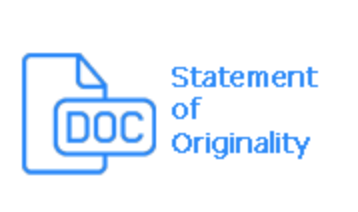A SUCCINCT ANALYSIS OF MITIGATING LIQUIDITY RISK IN ISLAMIC BANKS IN THE LIGHT OF LIQUIDITY AND RISK MANAGEMENT PRINCIPLES
Abstract
Liquidity management has been incessantly challenging for the financial institutions and especially Islamic financial institutions due to their nature of business. The convoluted nature of liquidity management impedes the task of Islamic banks in managing their liquidity efficiently. Given the intricacies of the subject matter, this paper delves into elaborating the critical aspects of liquidity management; subsequently, discusses the consequences of poor liquidity management and problems inherent in managing the latter by analyzing the real-life failure of an Islamic financial institution as a result identifying the issues that could possibly jeopardize the existence of the Islamic banks. The research aims to provide a comprehensive understanding of the liquidity management framework and furnish with effective tools to mitigate the liquidity risk for the Islamic banks.
Full Text:
PDFReferences
Al Zararee, A. N., & Al Faris, J. (2014, April). The Efficiency of Liquidity Management in Islamic Banks(Conservative vs Profit). International Journal of Business and Social Science, 5(5).
Bank Negara Malaysia Exposure draft. (2017, September 27). Retrieved November 28, 2018, from https://www.bnm.gov.my/index.php?ch=57&pg=137&ac=620&bb=file
Barton, T., Shenkir, W. G., & Walker, P. L. (2002). Making Enterprise Risk Management Pay Off. USA: Prentince Hall PTR/ FInancial Times.
Basel Committee on Banking Supervision (BCBS). (2001). Consultative Document: Operational Risk. Basel: Basel Committee on Banking Supervision.
Bessis, J. (2002). Risk Management in Banking. England: John Wiley & Sons, Inc.
Casu, B., Girardone, C., & Molyneux, P. (2006). Introduction to Banking. USA: Prentice Hall Financial times.
Froot, K., Stein, J., & Scharftein, D. S. (1994). A Framework for Risk Management. Harvard Business Review, 91-102.
Hartlage, A. W. (2012). The Basel III Liquidity Coverage Ratio and Financial Stability. Michigan Law Review.
Hubbard, D. W. (2007). How to Measure Anything, Finding the Value of Intangibles in Business. New Jersey: John Wiley & Son.
IILM. (n.d.). Retrieved November 26, 2018, from International Islamic Liquidity Management (IILM) Coporation: https://www.iilm.com/about-us/
Iqbal, Z., & Mirakhor, A. (2007). An Introduction to Islamic Finance: Theory and Practice. Singapore: John Wiley and Sons Asia, Pte, Ltd.
James, C. (1996). RAROC Based Capital Budgeting and Performance Evaluation: A Case Study of Bank Capital Allocation. Wharton's Financial Institutions Center's Conference on Risk Management in Banking. Pennsylvania: Wharton Financial Institution Center.
Johnson, P. (2000). Value at Risk: The New Benchmark for Managing Financial Risk. Singapore: John Wiley & Sons Asia, Pte, Ltd.
Khalid, S., & Amjad, S. (2012). Risk Management Practices in Islamic Banks of Pakistan. The Journal of Risk Finance, 13(2), 148-159.
Knight, F. H. (1921). Risk, Uncertainty and Profit. Chicago: Houghton Miffin Company.
Llewellyn, D. (1999). The Economic Rationale for Financial Regulation. Ocassional Paper Series.
Muhammad, M., & Ahmed, U. M. (2016). In Islamic Financial System: Principles and Operations, 2nd Ed (p. 152). Kuala Lumpur, Malaysia: International Shariah Research Academy for Islamic Finance (ISRA).
OECD. (2001). Risk Management-Practice Note. Paris: OECD.
Ogbada, A. O., & Osuji, C. C. (2013). The Efficiency of Liquidity Management and Banking Performance in Nigeria. International Review of Management and Business Research, 2(1), 223-233.
Penza, P., & Bansal, V. K. (2001). Measuring Market risk With Value at Risk. New Jersey: John Wiley & Sons, Inc.
Reyazat, F. (2012). Risk Management Framework in Islamic Banking: Basel II and Basel III, Challanges and Implications in Islamic Banking. Money and Economy, 6(2), 69-122.
Rosman, R., Azmi, A. C., & Amin, S. N. (2017). Disclosure of Shari'ah Non-Compliance Income by Islamic Banks in Malaysia and Bahrain. International Journal of Business and Society, 18, 45-58.
Slideplayer. (n.d.). Retrieved November 27, 2018, from https://slideplayer.com/slide/11767601/
Sobol, I. (2013). Liquidity Management Practices in Islamic Banking. 566-577.
Taher, M. (2004). Modern Risk Management in Banking and Finance. Beirut: Union of Arab Banks.
Williams, R., Bertsch, B., van der Wiele, T., van Iwaarden, J., Smith, M., & Visser, R. (2006). Quality and Risk Managemet: What Are the Key Issues? The TQM Magazine, 18(1), 67-86.
Zietlow, J., & Seidner, A. (2007). Cash & Investment Management for Non-profit Organizations. New Jersey: John Willey & Sons, Inc.
DOI: https://dx.doi.org/10.30659/ijibe.4.1.527-539
Refbacks
- There are currently no refbacks.

This work is licensed under a Creative Commons Attribution-ShareAlike 4.0 International License.
IJIBE (International Journal of Islamic Business Ethics) has been Indexed by












